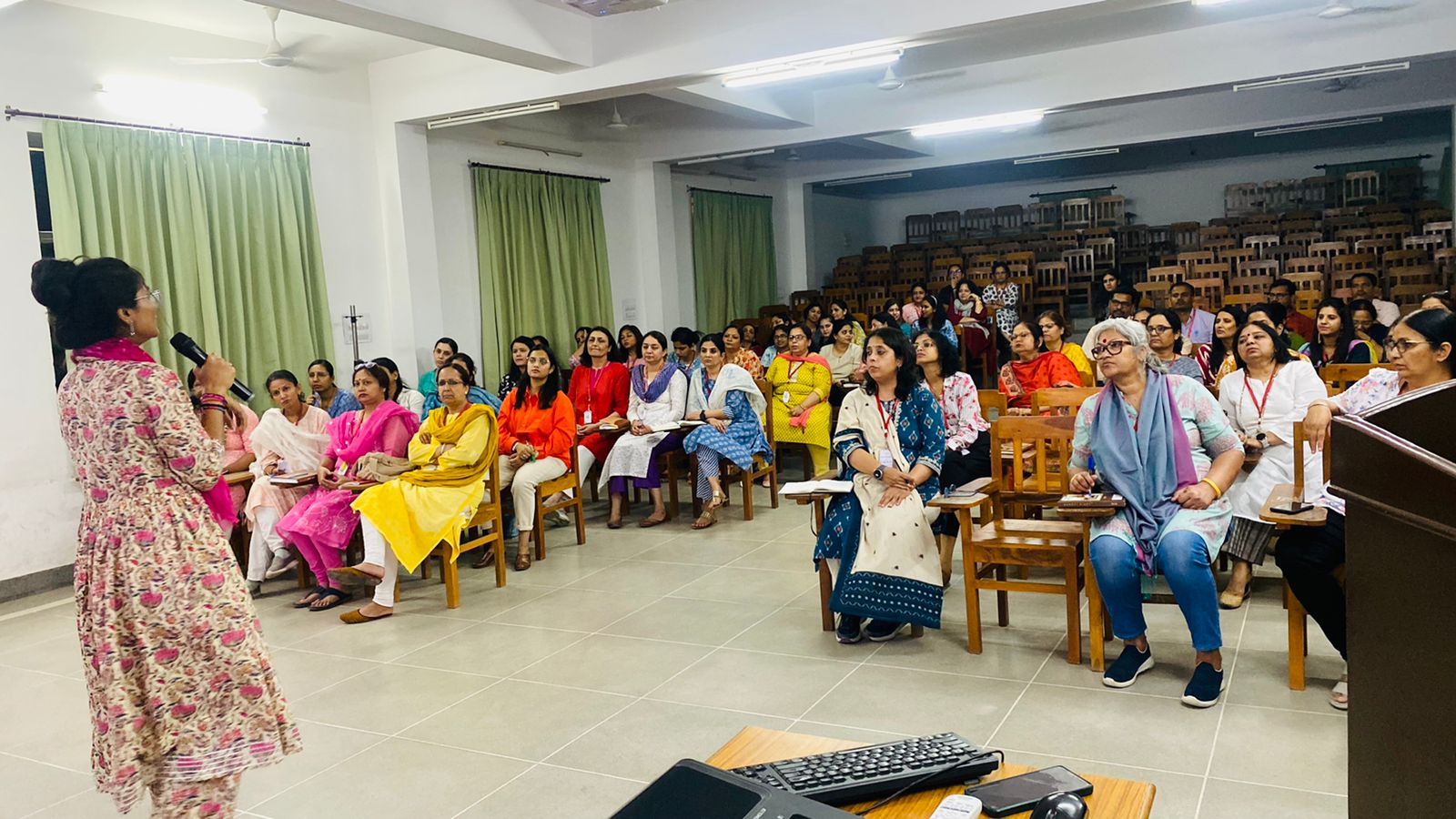Teenage: An age of confusion or enlightenment?
We've all wondered about teenage being the most fascinating of all the stages due to the many changes an individual goes through and its effects on teenagers' overall personality and life. A session for teachers was taken by the School Counsellor, Ms. Aashna Jain, on the Mental Health of Adolescents on the 29th of April, 2023. The session aimed at making teachers aware of the basic signs and symptoms of different disorders related to a child’s mental health, providing primary-level support, and being able to refer the child for professional help, if need be. It didn’t aim to teach the teachers how to diagnose or treat any mental illness but to keep a check on the warning signs.
A powerful video was shown that showcased how many teenagers do not report the fact that they are going through a hard time and therefore, refrain from seeking help. Stating the WHO statistics, she stressed that depression, anxiety, and behavioral disorders are among the leading causes of illness and disability among adolescents and Gen Z is more prone to developing a mental illness due to lifestyle changes, exposure to media, and many other reasons but they are the most receptive of all generations, and if guided in the right direction, they can do wonders and succeed with vibrant colours.
She then continued by stating the 4 D’s that help distinguish mental distress from a mental illness and how it’s important to not label anyone. She discussed the warning signs and symptoms of some common mental health disorders like depression, anxiety, stress, ADHD, and SLDs. The teachers were advised to keep a check on every student for the warning signs that manifest themselves in physical, emotional, social, or cognitive ways and also identify the red flags like self-harming behaviours and report them on a priority basis. They were asked to keep the golden rule of “Early Identification for Early Intervention” in mind and were given tips to handle a child who appears to be experiencing mental distress like remaining calm, listening without judgment, building trust, and adopting OLA (Observing, Listen and Act/Ask), etc.
The session ended with situation-based questions that were directed toward the teachers and they shared their best practices in the class and how they dealt with some students in their own creative and thoughtful ways. In the end, they were advised to always take care of themselves first to take care of others because ultimately happy students are made by happy teachers.

